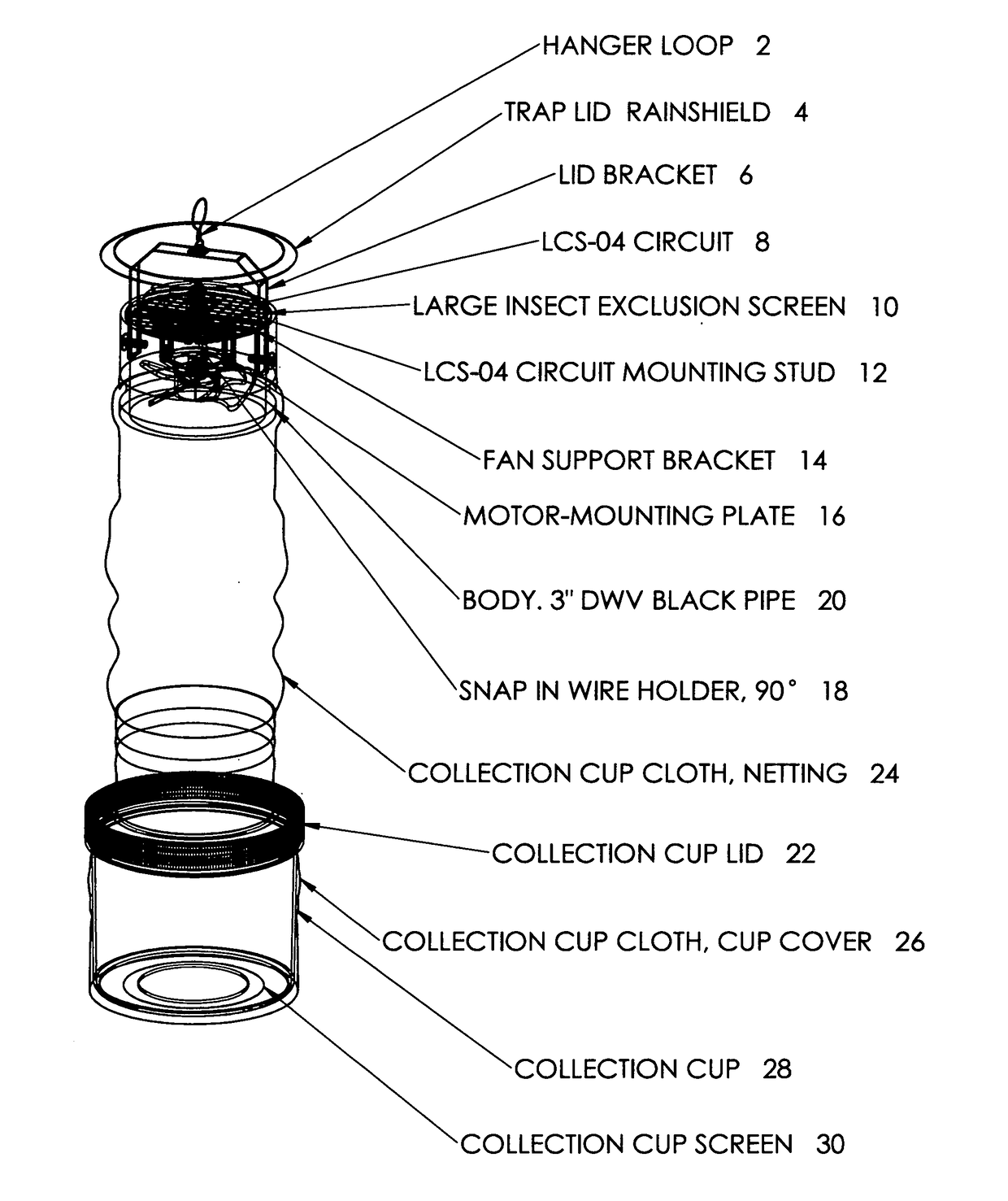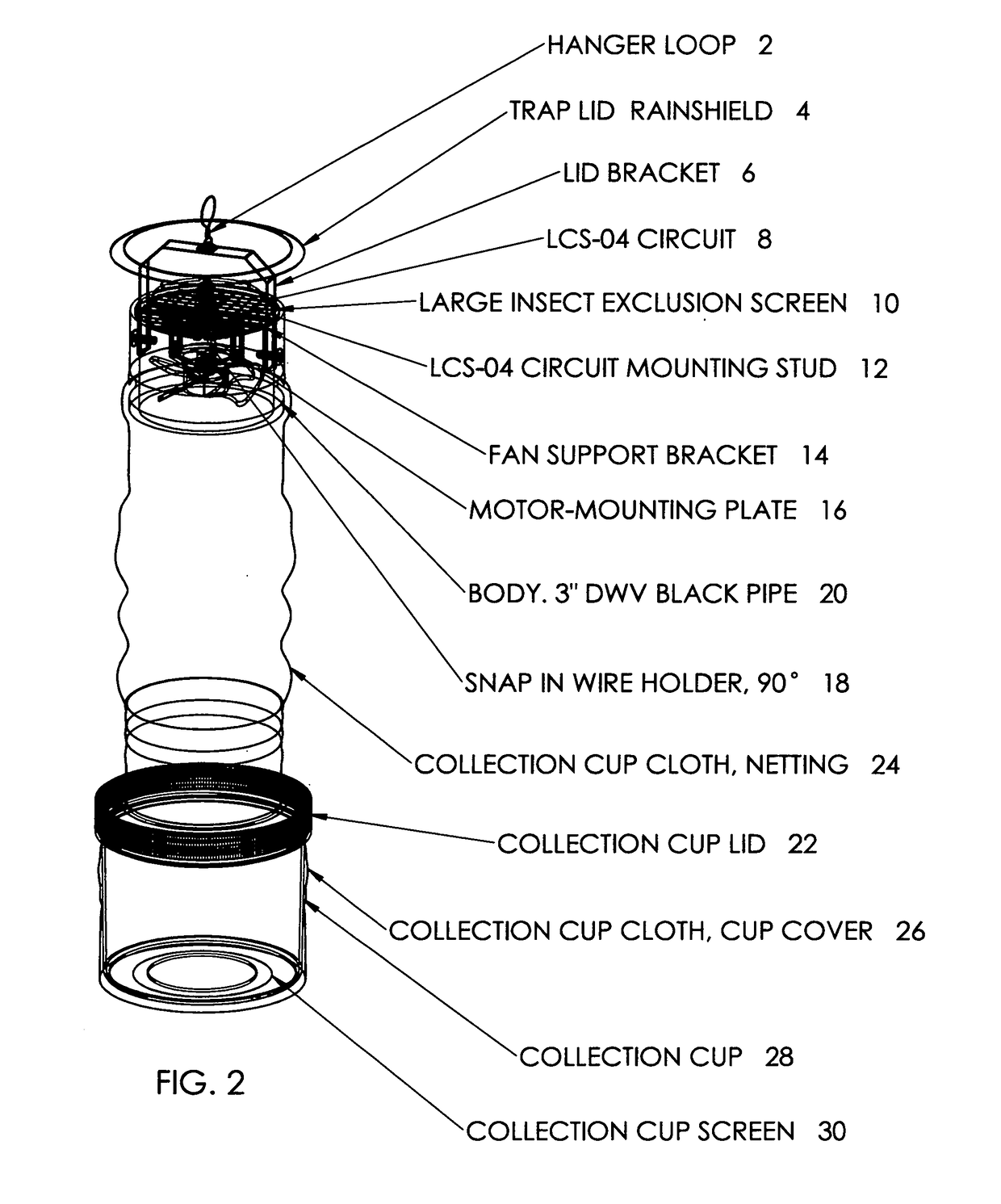Packaged stealthy mosquito trap
a mosquito trap and packable technology, applied in the field of mosquito traps, can solve the problems of limiting the size and battery requirements of the trap, affecting the safety and theft of the pm technicians, and achieving the effect of convenient and compact storag
- Summary
- Abstract
- Description
- Claims
- Application Information
AI Technical Summary
Benefits of technology
Problems solved by technology
Method used
Image
Examples
Embodiment Construction
Features of the 2014 Stealth Trap
[0057]A preferred embodiment of the present invention is called the “Model 2014 Stealth Trap” by Applicant and was designed to deal with adult mosquito and sand fly surveillance problems specific to the U.S. Department of Defense (DoD) when on foreign deployments. This embodiment of the present invention can be described by reference to the drawings. Problem using traditional DoD light traps have been uniquely addressed in the Stealth Trap design include the following inter-related issues:
[0058](1) Traditional DoD light traps require a large rain shield because of the size of the two-ringed collection bag, i.e., the traps are not compact. This restricts the number of traps used in a deployment, a logistical issue; this has been a persistent issue and a work-around has not yet been found.
[0059](2) The DoD standard light trap is not efficient electrically because of the incandescent bulb which consumes more current than the aspiration fan. Hence the re...
PUM
 Login to View More
Login to View More Abstract
Description
Claims
Application Information
 Login to View More
Login to View More - R&D
- Intellectual Property
- Life Sciences
- Materials
- Tech Scout
- Unparalleled Data Quality
- Higher Quality Content
- 60% Fewer Hallucinations
Browse by: Latest US Patents, China's latest patents, Technical Efficacy Thesaurus, Application Domain, Technology Topic, Popular Technical Reports.
© 2025 PatSnap. All rights reserved.Legal|Privacy policy|Modern Slavery Act Transparency Statement|Sitemap|About US| Contact US: help@patsnap.com



